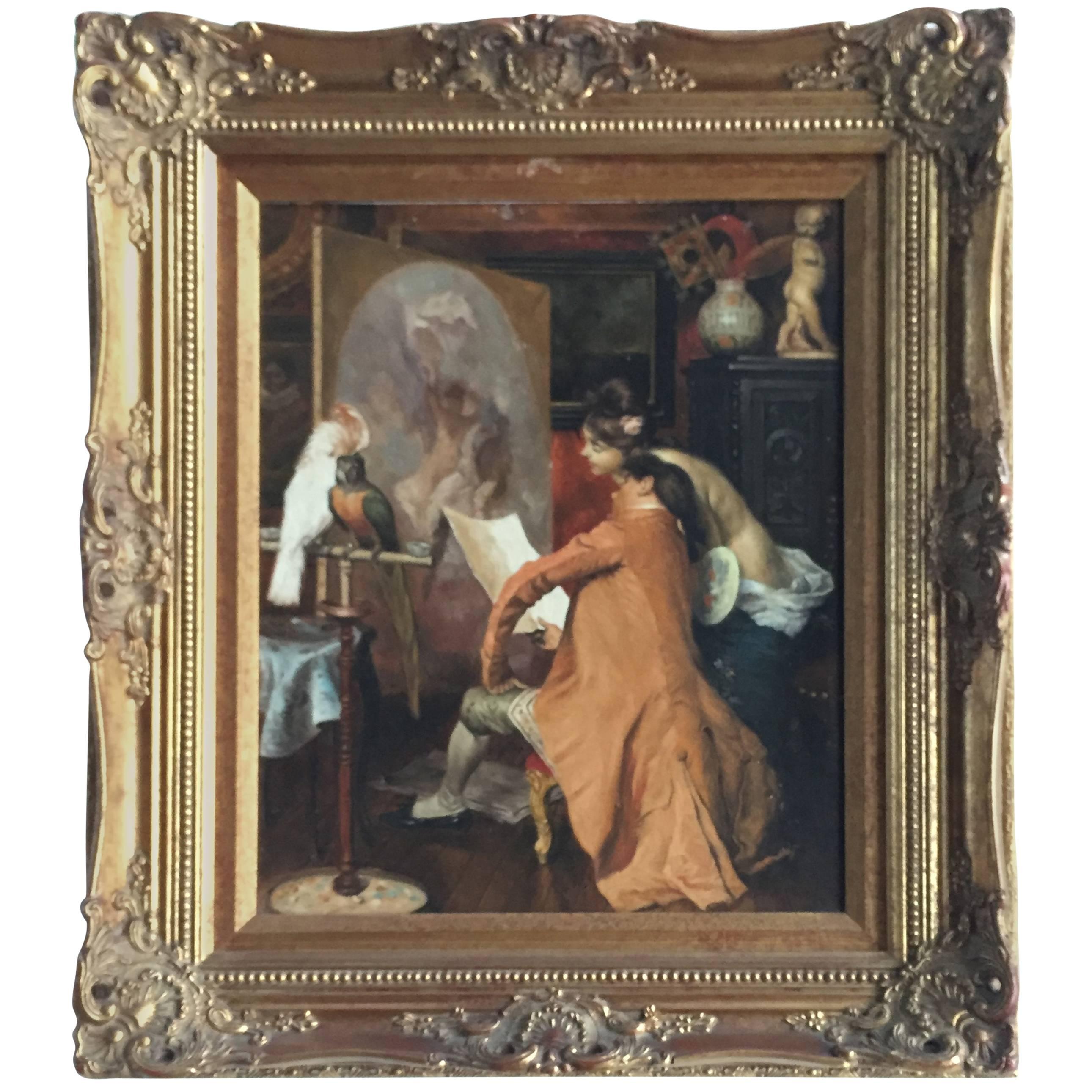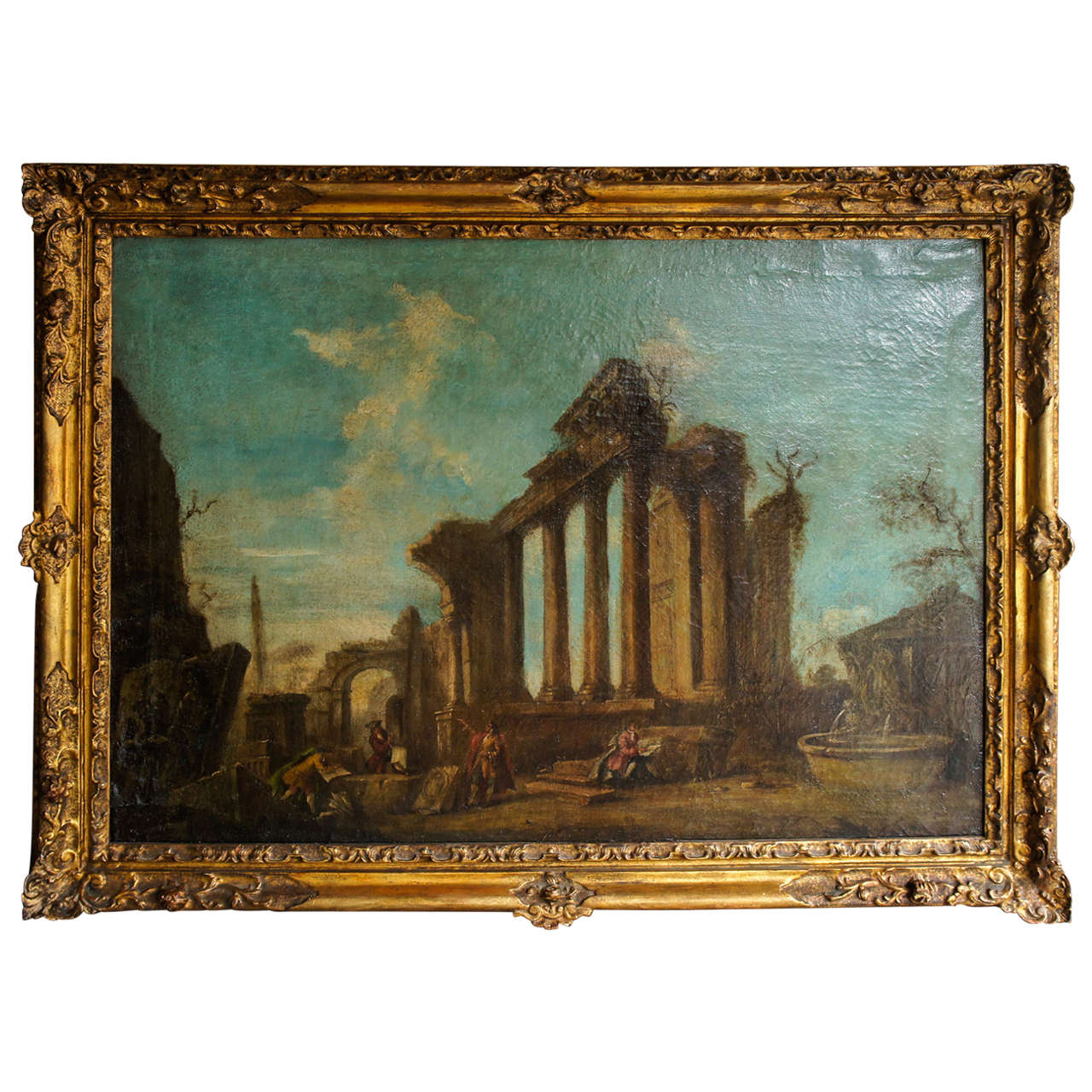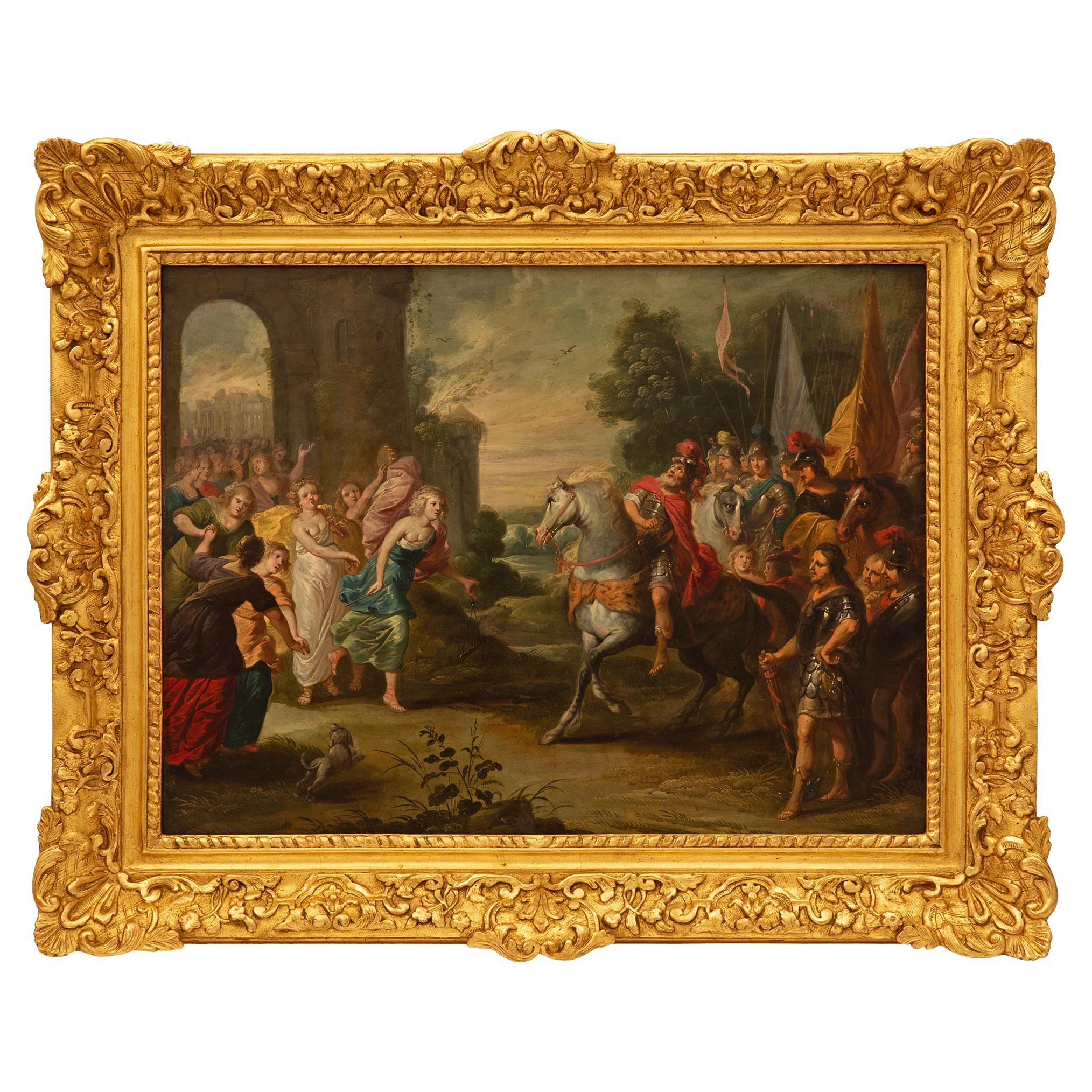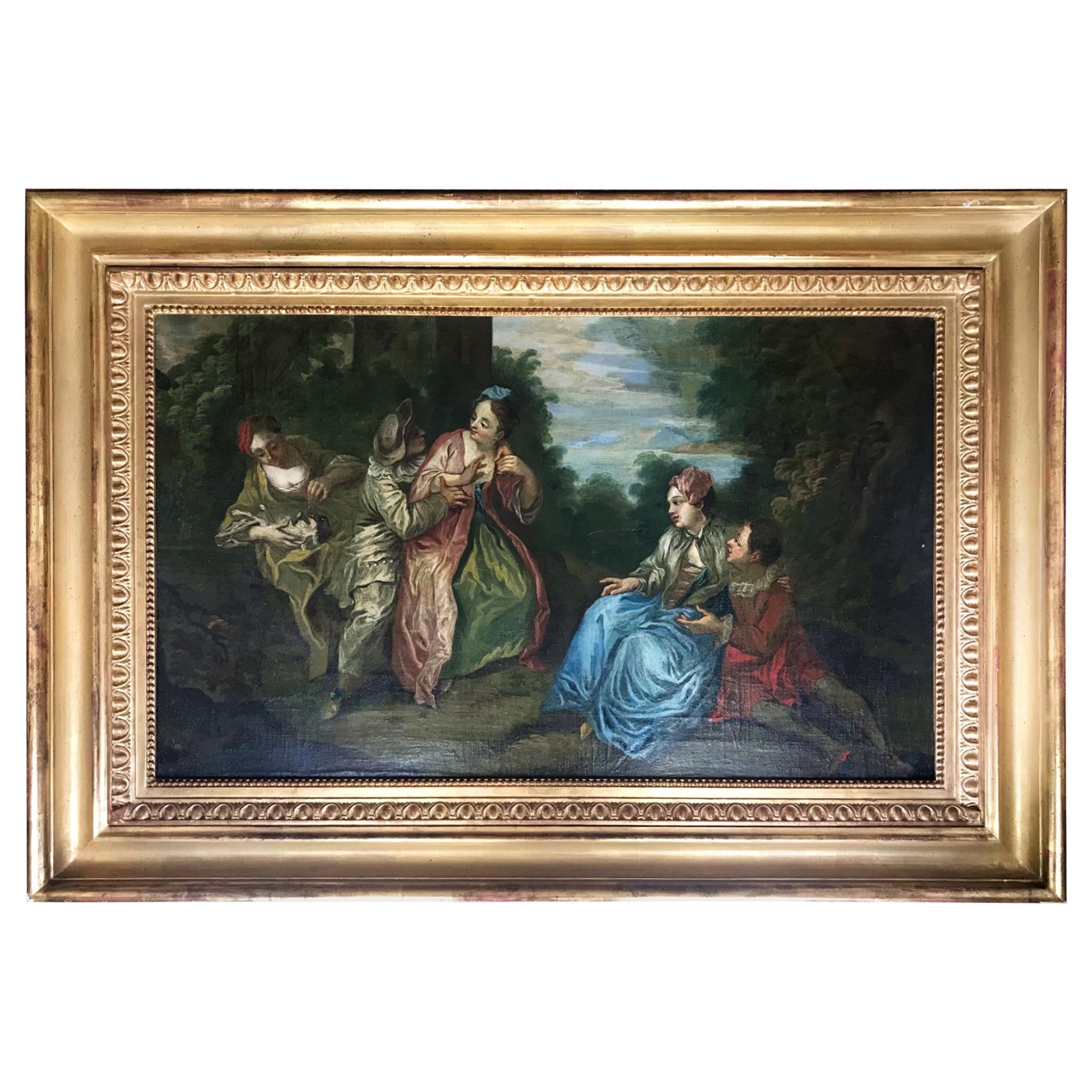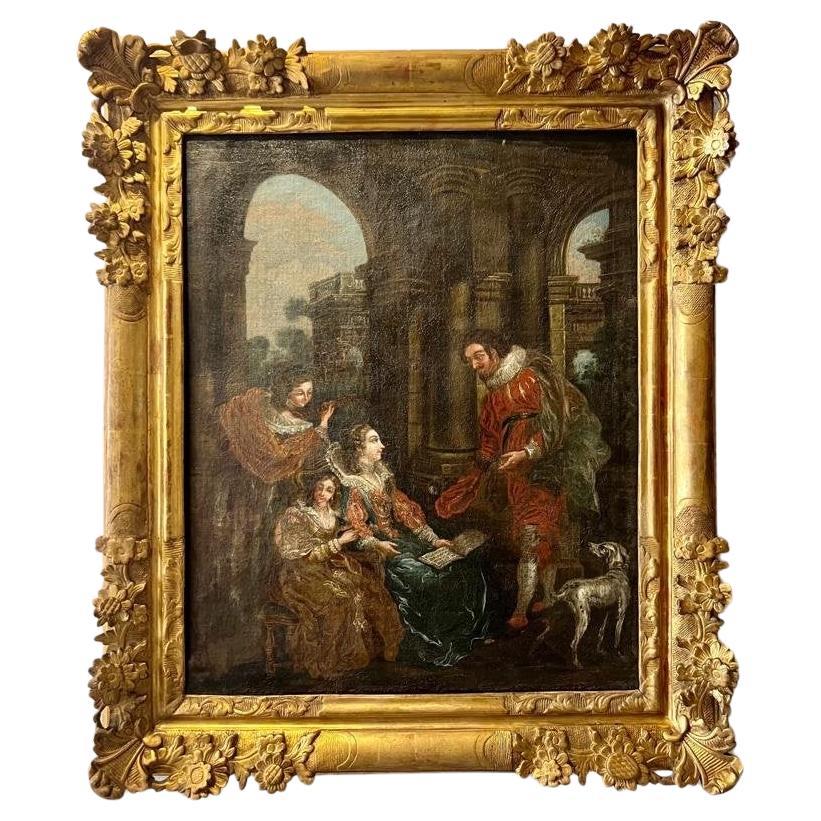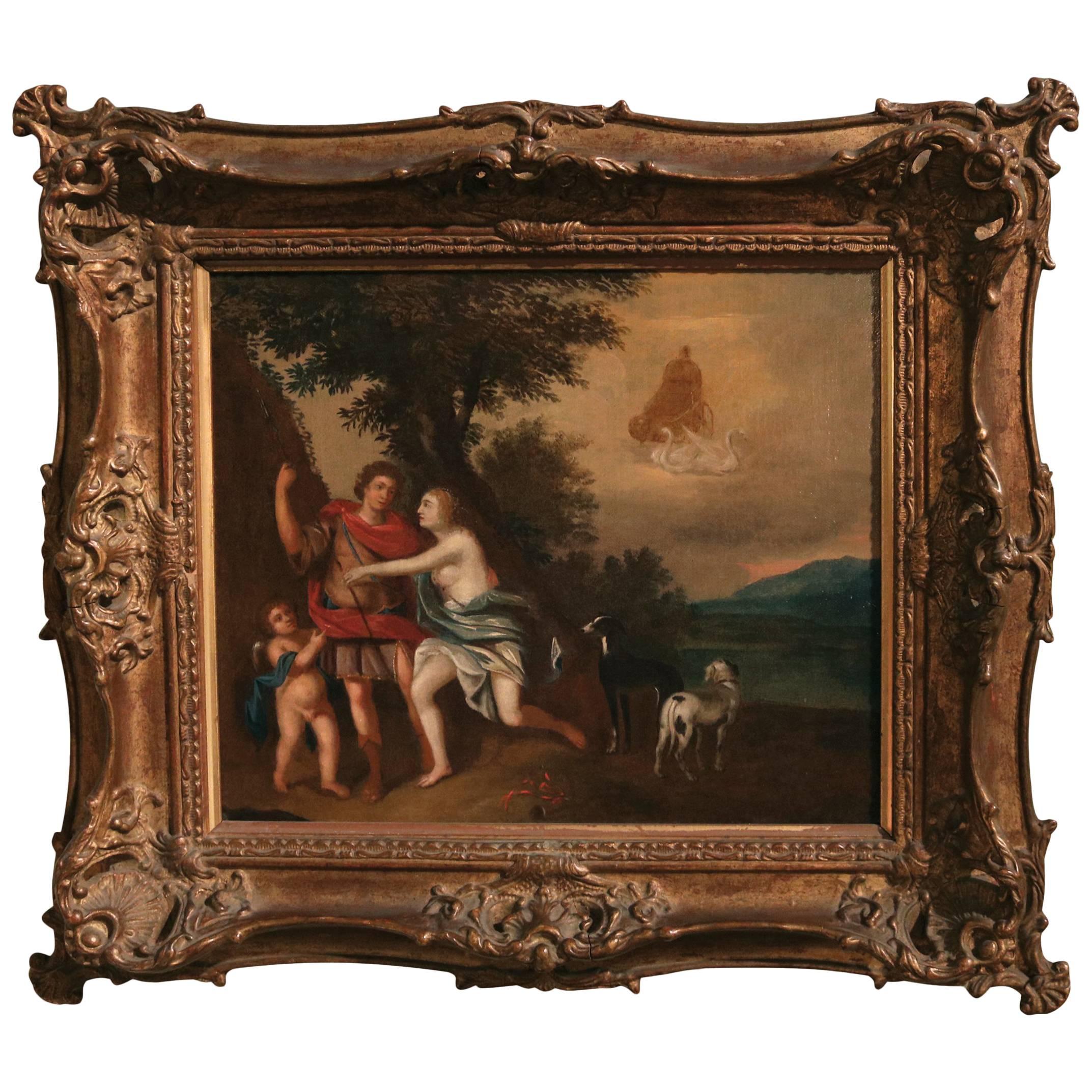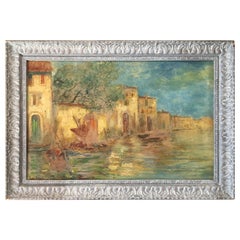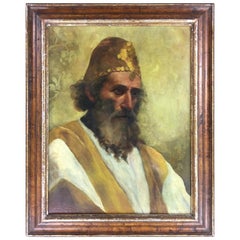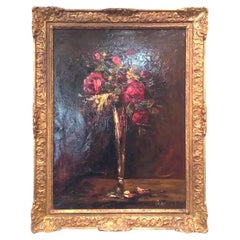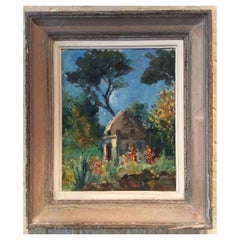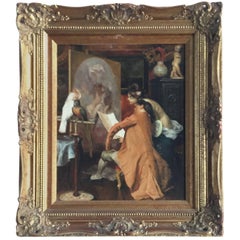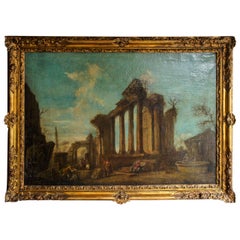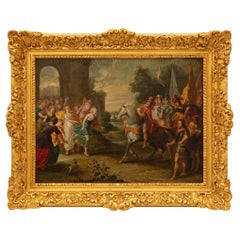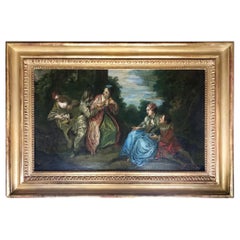Items Similar to 17th Century Painting from the Circle of Sir Peter Paul Rubens
Want more images or videos?
Request additional images or videos from the seller
1 of 7
17th Century Painting from the Circle of Sir Peter Paul Rubens
$12,000
£9,167.37
€10,531.17
CA$17,180.80
A$18,793.85
CHF 9,791.84
MX$226,132.19
NOK 124,000.62
SEK 116,424.70
DKK 78,642.04
About the Item
Original 17th century painting attributed to the Circle of Sir Peter Paul Rubens as confirmed by Christies London.
This beautiful work of art is painted on copper and set in a hand carved 19th century ornate giltwood frame. This traditional painting is of high quality typical of the period. It is historical subject matter and titled the Abduction of the Sabine Women.
Measurements framed: 27 1/2" L x 23" H x 4" D
Artwork: 17 7/8" L x 13 5/8" H
Peter Paul Rubens was a Flemish born artist, who made a name for himself not only in the art world, but also through this diplomatic reign. Much of his work focused on religious figures, as well as diplomatic figures of the time, and he was known for the Baroque style, and bold European style of painting, which most of his works took shape around. Although he lived a short life, he had amassed many achievements by the time of his death. In addition to being one of the most talented artists in Europe, whose work outsold other artists at the time, he was also knighted, was hired for various commissions for diplomatic figures as well as church pieces, and even after his death, his fame continued to grow in the art world. Rubens was also well known for the Baroque movement, which emphasized movement, bold color choices, and sensuality in the works.
Many versions of this art subject have been painted by masters over time.
During the next thirty years of his career, many well known pieces and influential pieces of the time, were delivered. Some of the most notable and most well known include: Raising of the Cross (1610) and The Rape of the Daughters of Leucippus (1617). In addition to his courtship for religious works, and altar pieces, Rubens was also highly in demand for his courtship work, and creations of some of the most well known diplomatic figures of the time. The reason for this was the allegorical connection, and the mythological ties he made, between these diplomatic figures, and gods and goddesses. This was done to juxtapose the lofty positions these leaders held, and their power over the countries which they ruled.
Others include those particularly noted, Nicolas Poussin's painting.
Firstly, in Poussin’s work, he used the foreground to show the actual abduction. The scene may look chaotic with bodies in various poses but a closer examination shows that it is actually well-organized. Each figure plays a part and the poses are ‘statuesque’ and with the ‘perfect’ proportion of the semi naked soldier at the forefront of the canvas. This reminiscence of Roman classical figures links us directly to the background with the building and columns being of a Roman style.
While the composition may make the painting appear static, not helped by Poussin’s absence of brushstrokes creating a smooth and controlled surface, the sense of movement is brought about by the positioning of the figures. We see King Romulus standing high to the left, dressed in the red robes of leadership, as if conducting the scene and with the raised arms of several of the characters all pointing to the centre of the composition, we become more aware of their struggle as our eye is drawn to the centre of the canvas.
Rubens plays with the idea of a scene within a scene by using the background to show the aftermath of the abduction with the two tribes fighting each other. The composition has a symmetry to it, despite the chaos. The central four figures lock our gaze and, as we look outwards, we notice the columns divide the picture equally. The architectural setting is not distinctly Romanesque and the costumes and finery of the women is more Flemish than classical and with a 17th century feel. We can ask whether Rubens was attempting to use this story for symbolic meaning. Here, Romulus is hidden in the shadows, whereas Poussin puts him into an elevated position, thereby creating a more sinister scene, especially where we note the states of undress that Ruben’s Sabines are portrayed and the way in which his palette is more muted than Poussin's.
- Attributed to:The Circle of Peter Paul Rubens (Artist)
- Dimensions:Height: 23 in (58.42 cm)Width: 27.5 in (69.85 cm)Depth: 4 in (10.16 cm)
- Materials and Techniques:
- Place of Origin:
- Period:
- Date of Manufacture:17th Century
- Condition:Wear consistent with age and use. This painting has recently been professionally restored and cleaned, photos upon request.
- Seller Location:Miami, FL
- Reference Number:1stDibs: LU4082112414111
About the Seller
4.9
Platinum Seller
Premium sellers with a 4.7+ rating and 24-hour response times
Established in 2014
1stDibs seller since 2018
589 sales on 1stDibs
Typical response time: 1 hour
- ShippingRetrieving quote...Shipping from: Miami, FL
- Return Policy
Authenticity Guarantee
In the unlikely event there’s an issue with an item’s authenticity, contact us within 1 year for a full refund. DetailsMoney-Back Guarantee
If your item is not as described, is damaged in transit, or does not arrive, contact us within 7 days for a full refund. Details24-Hour Cancellation
You have a 24-hour grace period in which to reconsider your purchase, with no questions asked.Vetted Professional Sellers
Our world-class sellers must adhere to strict standards for service and quality, maintaining the integrity of our listings.Price-Match Guarantee
If you find that a seller listed the same item for a lower price elsewhere, we’ll match it.Trusted Global Delivery
Our best-in-class carrier network provides specialized shipping options worldwide, including custom delivery.More From This Seller
View AllFrench Post Impressionist Landscape Painting, Signed
Located in Miami, FL
Original French impressionist oil on board painting depicting the waterways of what may Port Grimaud, near St. Tropez, France.
Signed, but artist name is illegible and unknown.
Di...
Category
Mid-20th Century French Paintings
Materials
Wood, Paint
19th Century Figurative Oil on Canvas Painting, Painting of a Bearded Man
Located in Miami, FL
19th Century FIgurative Oil on Canvas Painting, Signed
19th Century Oil on Canvas Portrait of a Bearded Man
A finely executed 19th century oil on canvas portrait depicting a bearde...
Category
Antique 19th Century Paintings
Materials
Canvas, Paint
French Still Life Floral Painting by Charles Franzini d'Issoncourt
Located in Miami, FL
Magnificent French Floral Oil Painting from Paris Universal Exposition in 1900.
This captivating 19th-century still life oil painting by the award-winning French artist Charles Henr...
Category
Antique Early 1900s French Baroque Paintings
Materials
Canvas, Paint, Giltwood
Original French Provincial Oil Painting on Isorel Signed Victor Ferreri
By Victor Ferreri
Located in Miami, FL
Beautiful original painting on isorel (board) bursting with amazing Provençal or Provincial colors just like the scenery in the region. The artist Victor Ferreri was a very well-know...
Category
20th Century French Mid-Century Modern Paintings
Materials
Wood, Paint
Ornately Giltwood Framed Floral Painting by Charles Franzini D’issoncourt
Located in Miami, FL
Magnificent French Floral Oil Painting by Charles Henri Franzini d’Issoncourt
A striking original oil on canvas by the distinguished French artist Charles Henri Franzini d’Issoncour...
Category
Antique Early 1900s French Baroque Paintings
Materials
Canvas, Paint, Giltwood
Very Large 19th Century French Seascape Oil Painting by Alfred Couturaud
Located in Miami, FL
A fine original seascape painting in its original hand carved gilt wood frame.
This large work of art is painted on canvas and has recently been cleaned to display its delightful det...
Category
Antique Late 19th Century French Art Deco Paintings
Materials
Canvas, Giltwood, Paint
$17,000 Sale Price
51% Off
You May Also Like
17th Century Painting
Located in Miami, FL
17th century painting
J.Castano
17th century
Spain
Category
Antique 17th Century Baroque Paintings
Materials
Canvas
$25,000
19th Century Italian Oil Painting in the Manner of Antonio Panini
Located in Hudson, NY
This fine old painting is a typical pastiche of the kind popular throughout Italy and the world in the 17th, 18th and 19th centuries. The most commonly associated artist who really m...
Category
Antique 19th Century Italian Baroque Revival Paintings
Materials
Canvas, Wood
Flemish Late 17th Century/Early 18th Century Oil on Canvas Painting
Located in West Palm Beach, FL
A stunning and most impressive Flemish late 17th century/early 18th century oil on canvas painting possibly by Frans Francken III. The beautiful and...
Category
Antique 17th Century Dutch Paintings
Materials
Canvas, Giltwood
18th Century French Rococo Painting Circle of François Boucher
By François Boucher
Located in Vero Beach, FL
18th century French Rococo Painting Circle of François Boucher
This idyllic pastoral oil painting shows Boucher’s impact on this f...
Category
Antique 18th Century French Rococo Paintings
Materials
Canvas
Mid 18th Century Oil Painting Depicting a Scene with Courtesans on Canvas
By Charles-André van Loo
Located in NICE, FR
Title : Spanish Conversation, in the style of Carle Van Loo
We present you this wonderful 18th century oil on canvas painting depicting three French courtesans, a nobleman, and his ...
Category
Antique Mid-18th Century French Louis XV Paintings
Materials
Canvas
18th Century oil painting from the Sschool of Jan van Neck
Located in London, GB
An early 18th century oil painting from the school of Jan van Neck (1635-1714), Amsterdam, depiction mythological subjects, probably Venus, Cupid and Mars wit...
Category
Antique Early 18th Century Dutch Other Paintings
Materials
Paint
More Ways To Browse
Religious Altar Pieces
Modern Abstract Scandinavian Paintings
19th Century French Seascape Paintings
Antique Copper Still
Antique Oil Painting Ships
Antique Persian Miniatures
Art Deco Bathers
Chimney Sweep
Coat Of Arms Painting
Danish Artist Landscape
English Oil On Canvas Horse
Flower Danish Painting
French Genre Paintings
French Hunting Paintings
India Ink Furniture
Scottish 19th Century Landscape Paintings
Serbia Paintings
Sheep Shepherd Antique Oil Painting
